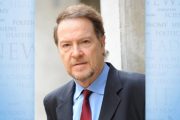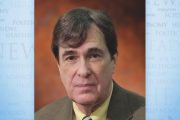
During the months leading to the 2016 election for president, the American people were repeatedly told that Democrat Hillary Clinton was sure to win — and become the first female president of the United States. How were the people assured of her victory? Polling results — and there were many — were almost unanimous for Clinton. It was going to be an easy win for her.
But even though Mrs. Clinton won several million more votes than did Donald Trump, at least based upon the official returns, it was Trump whose Electoral College numbers won the presidency. The polls were wrong, and some Americans lost confidence in polling, a good development for our nation.
Prior to the 2020 elections, pollsters repeatedly told Americans that a blue wave (a Democrat sweep) was about to inundate the nation. Joe Biden would win decisively — with seven to eight percent victories in Michigan and Wisconsin. He would also triumph in swing states such as Florida, North Carolina and Georgia. Even Texas would likely go blue. But the polls were wrong again — even assuming the election results now being contested by the Trump administration were not significantly marred by vote fraud.
The blue wave didn’t materialize in the presidential arena, and it likewise failed in predicting the winning sides in many Senate and House races. As of a full week after Election Day, the GOP didn’t lose control of the Senate when polls said that would happen. (They now have at least half the seats in the 100-member body, and could end up with as many as 52 seats depending on what happens in Georgia.) And GOP candidates came out victors in as many as ten seats in the House where the pollsters said they would take a serious hit.
If the American people were asked to provide their opinion of polling after Election Day 2020, polling would be declared a decisive loser. But, sad to say, even that result can be overcome by clever pollsters.
Few people alive today know that modern opinion polling was begun by Vladimir Lenin. He wanted to know what the peoples’ grievances were so he could concoct some lies addressing their concerns. A more ancient example where the technique was employed saw Pontius Pilate’s polling of a mob to find out what to do with this fellow named Jesus. As you know, the mob’s preference won the day.
In our country, two of the men responsible for elevating polling to prominence were George Gallup and Elmo Roper. Gallup became a Council on Foreign Relations member in 1939; Roper joined the CFR in 1944. Membership in this advocate of a New World Order would likely cloud the results of her poll-taking. Both men developed processes not meant to discover and report on the actual opinions of the people, but to help shape their opinion. Such a dishonest use of polling has become more the norm than the exception. There are even examples of outright dishonesty in the use of polling.
In 1991, a full year before the 1992 presidential election, President George H.W. Bush was already working on his campaign. Several of his aides suggested that he energize his popularity by dumping Dan Quayle, his vice presidential running mate. In his 1995 book Call the Briefing, Bush’s press secretary, Marlin Fitzwater, revealed that then-Secretary of State James Baker along with campaign manager Robert Teeter had already developed some poll results showing that Quayle was a drag on the ticket and would soon be replaced. But they never conducted any poll; what they did was produce some figures favoring the conclusion they wanted. They would then announce their phony findings to the press who would then innocently — or maybe not innocently — convey the so-called results to the public. President Bush was in on the scheme.
Soon however, they decided not to follow through on their dishonest plan to cite the results of phony poll that was never taken. Can poll results be created without taking a poll? Top Republicans believed such a fraud could be undertaken. Likely the scheme had already been employed previously.
Years ago, pollster John Zogby made a habit of trying to honestly discern the attitude of those he questioned. He also directed his questions only to likely voters. He revealed what he termed “the nasty secret of the business,” the fact that more than half of the people contacted by pollsters tell them to get lost and refuse to cooperate with them.
Poll takers have developed techniques involving the use of related questions. If a pollster asks for an opinion of a president’s performance after he has helped to bring about something considered very positive, the responses he receives could be as high as 70 percent. But if a pollster asks first about a president suffering a political setback, or having to defend a character flaw, or issuing a frank opinion about a controversial topic, the favorable rating plunges dramatically.
The spreading attitude infecting our nation is that the majority can’t be wrong. That in itself is wrong, and it is an attitude spread by polling. Taking and reporting the results of an honest poll isn’t inherently evil. But when the pollsters are so wrong — something that lately happens repeatedly — people get buffaloed into silence or defeatism. They decide that their own positions on candidates or issues are fruitless.
One significant problem with polls is the downright partiality of some polltakers. Working together with political favorites and financiers, politicians have become mouthpieces for favored candidates or personalities. This is very dangerous. It was Nazi Germany’s Josef Goebbels who, in 1932, famously stated, “It is the absolute right of the State to supervise the formation of public opinion.”
America has not yet become subject to such a tyrannical attitude. Let’s keep it that way. And let’s help fellow Americans understand that pollsters have been grossly wrong in recent elections and they deserve to be disregarded.




